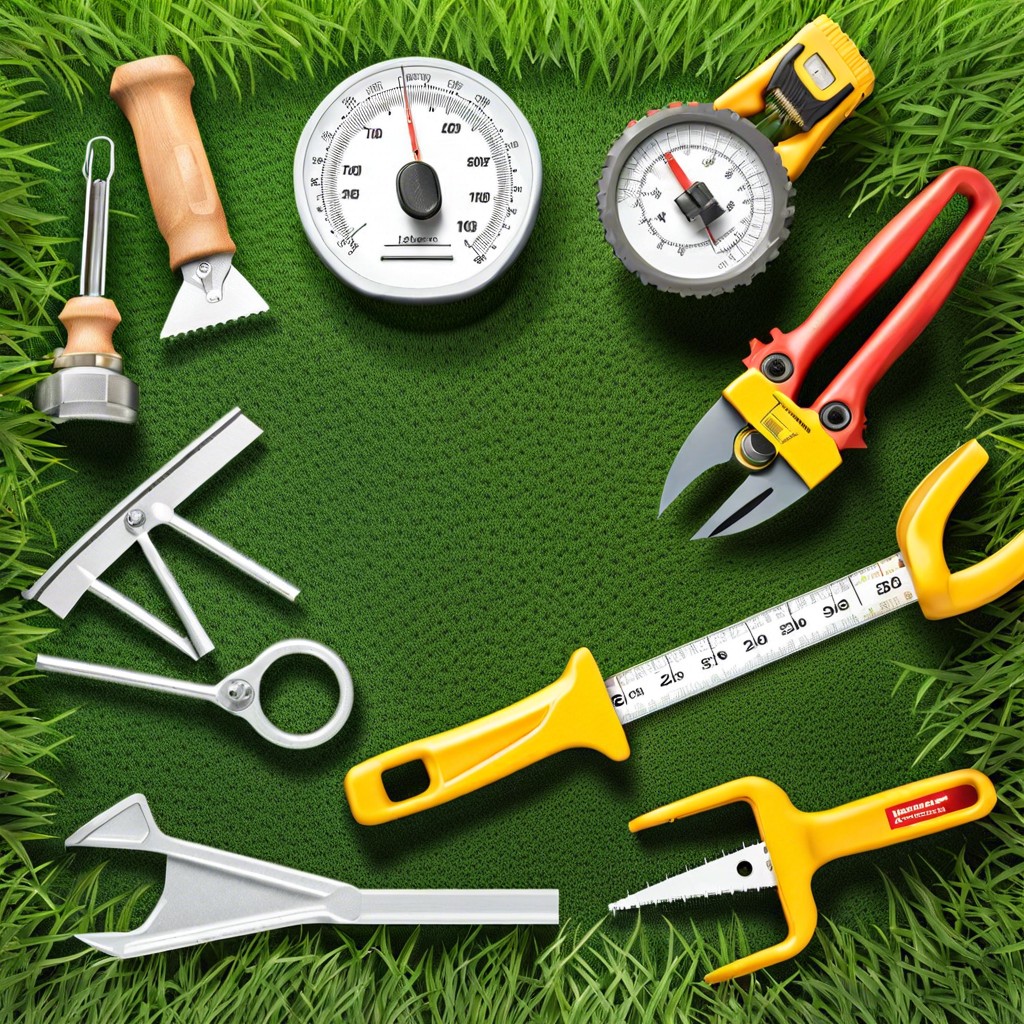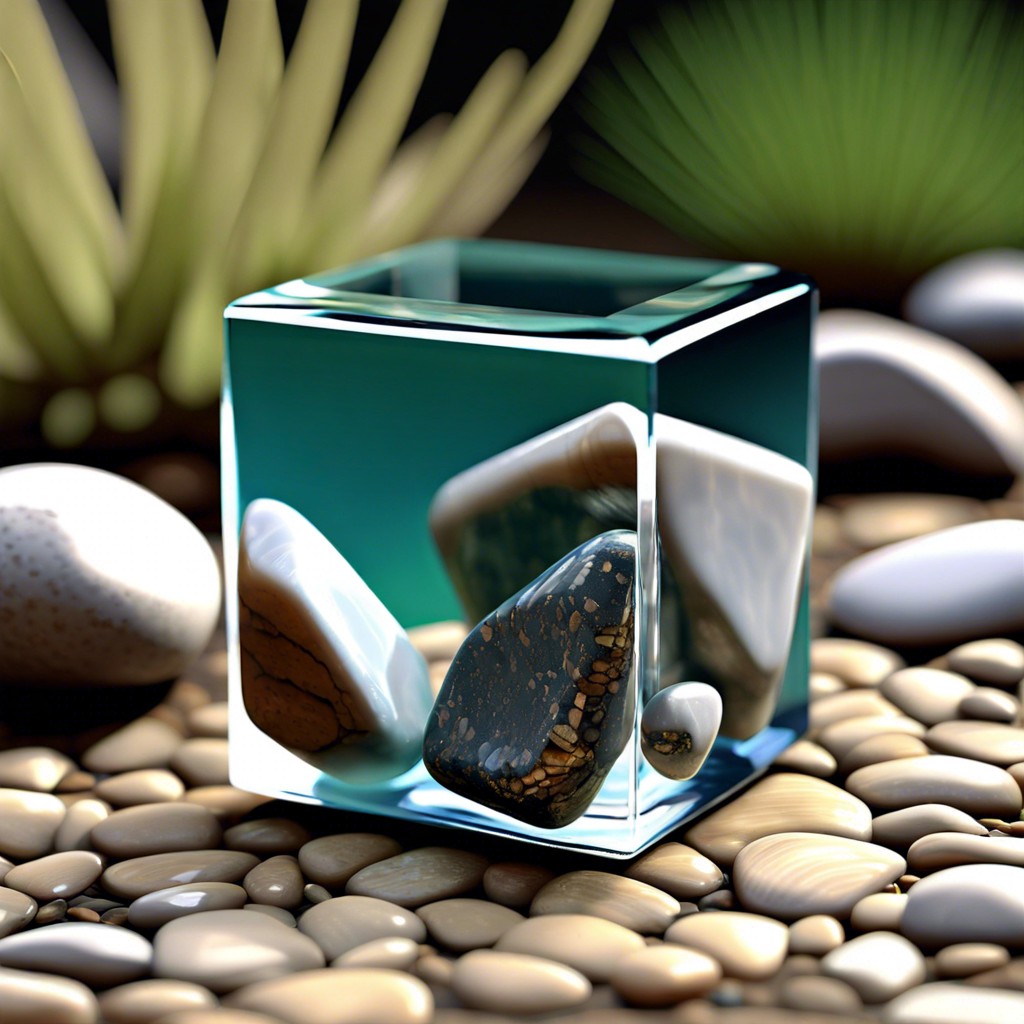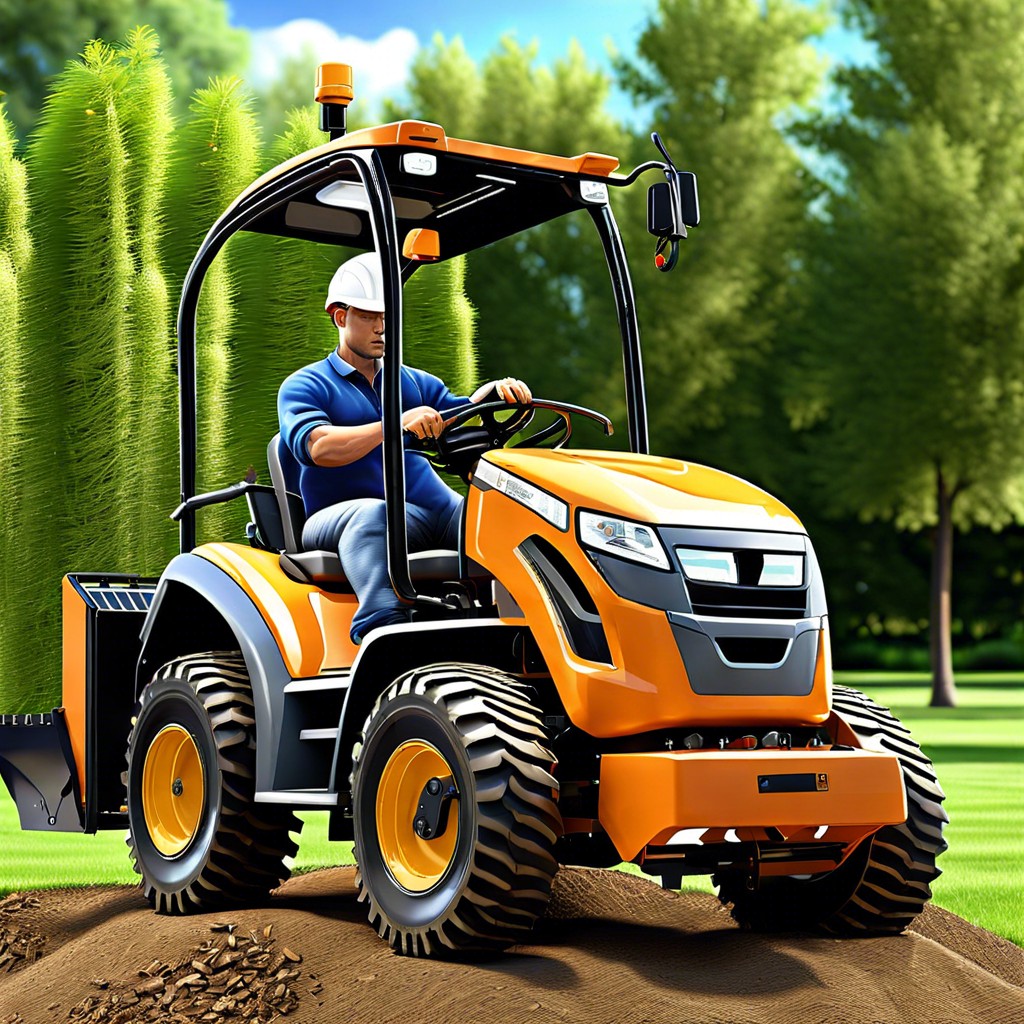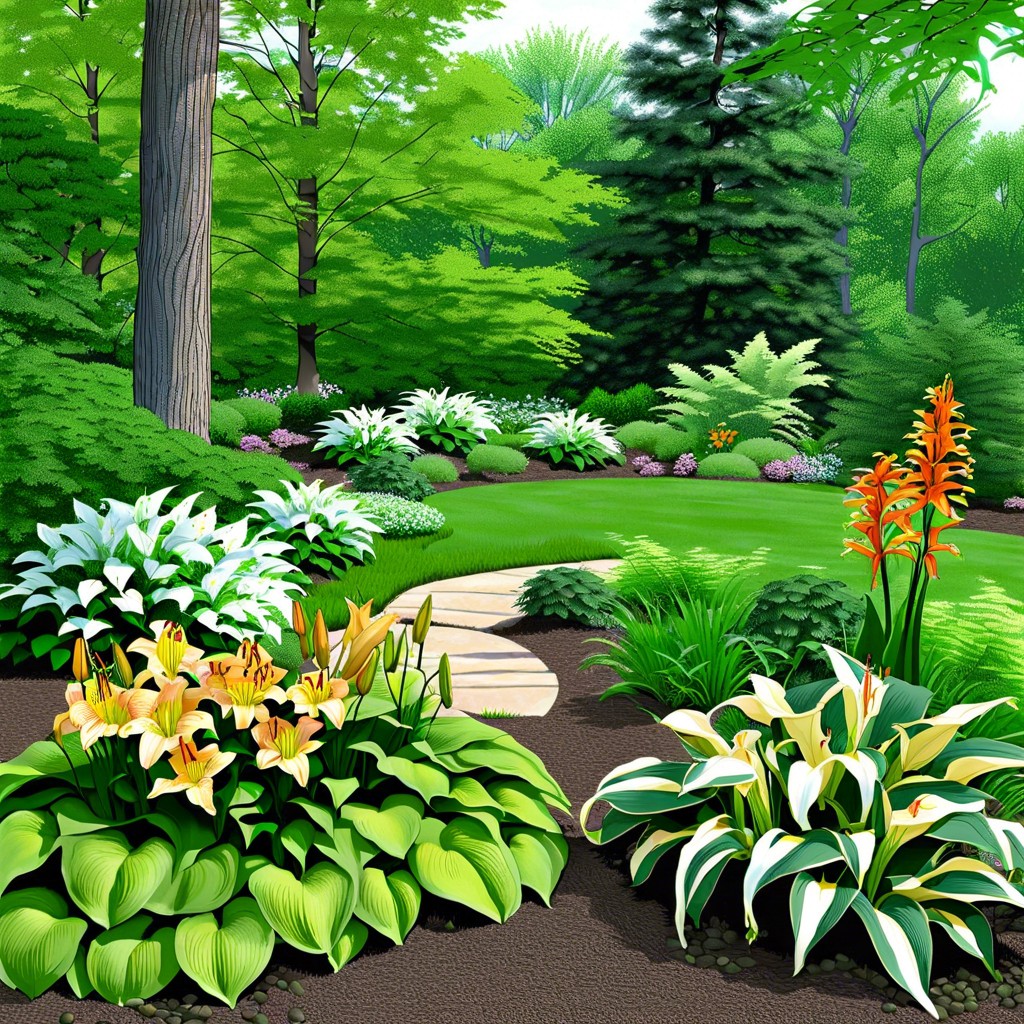Transform your outdoor space into a picturesque oasis with the right landscaping tools—this article details the essential equipment to cultivate, maintain, and enhance your garden effectively.
Key takeaways:
- Measurement tools: Tape measure, wheel measures, laser measures, level, garden markers and flags.
- Soil and plant analysis tools: Soil pH tester, moisture meters, soil composition analyzer, hand lens.
- Watering and irrigation equipment: Garden hoses, sprinklers, drip irrigation systems, timers and smart controllers, pop-up sprinkler heads.
- Cleanup tools: Rake, leaf blowers, broom, wheelbarrow or garden cart, pruners and shears, compost bins, gloves.
- Specialty landscaping tools: Manual sod cutter, edgers and trowels, bulb planter, pole saw, grafting shears, hedge trimmers, landscape fabric staplers.
Landscaping Measurement Tools

Precise planning is crucial for transforming outdoor spaces, and that’s where measurement tools come into play. These tools ensure your landscaping vision is accurately mapped out and executed.
Tape Measure: This classic tool helps you determine the length of flower beds, the distance between shrubs, and the perimeter of lawn areas. It’s essential for spacing out plantings and structures accurately.
Wheel Measures: For larger areas, a measuring wheel can be rolled across your yard to record the distance travelled, making it perfect for estimating materials for walkways or fences.
Laser Measures: When precision matters, a laser measure can save time and eliminate guesswork. It’s especially handy for hard-to-reach spots or for calculating the layout of decks and patios.
Level: Ensuring your flower beds and hardscape elements are level can prevent water pooling or uneven plant growth. A spirit level does the job for smaller spaces, while a laser level can span wider areas.
Garden Markers and Flags: After measuring, marking clear points is necessary. Garden markers can indicate where plants should go or where structures will be built, ensuring you stay on track during the project.
These measurement tools are foundational for creating a well-proportioned landscape design that balances aesthetics with functionality.
Soil and Plant Analysis Tools
To ensure your garden thrives, understanding your soil and plant health is crucial. A soil pH tester, for instance, can reveal whether your soil is acidic, neutral, or alkaline, which greatly influences plant growth. Additionally, moisture meters help you determine when to water by gauging soil hydration levels.
If you’re keen on optimizing nutrient content, a soil composition analyzer can identify concentrations of nitrogen, phosphorus, and potassium – the vital elements for plant vitality. For those looking to delve deeper, digital soil thermometers can track temperature changes and their impact on root development.
Plants, too, have indicators for health. Using a hand lens, you can inspect leaves for pests or diseases that might not be visible to the naked eye. It’s all about providing the right conditions for plants to flourish, and these tools are your guardians, helping you to make informed decisions for a lush landscape.
Landscaping Watering and Irrigation Equipment
Effective hydration is crucial in maintaining a vibrant and healthy landscape. To ensure your gardens and lawns receive the necessary moisture, various tools and systems can be deployed.
Garden hoses are the simplest among these, ideal for small spaces or spot-watering needs. They can be paired with adjustable nozzles to control the water flow and pattern, giving you precision in watering specific areas.
For a more automated approach, sprinklers offer convenience and coverage, ranging from stationary types for small patches to oscillating and rotating sprinklers for larger areas.
To maximize water efficiency and minimize waste, drip irrigation systems can deliver water directly to the roots of plants, minimizing evaporation and ensuring deeper soil penetration.
Timers and smart controllers take the guesswork out of watering schedules, enabling you to automate watering cycles based on the needs of your landscape. These devices can adjust the watering frequency and duration based on environmental conditions like rain, soil moisture, and temperature, ensuring your landscape receives the right amount of water at the right time.
For larger or commercial properties, underground irrigation systems with pop-up sprinkler heads provide a higher degree of control and reduce the visual impact of the watering equipment.
Whether you have a sprawling estate or a small garden plot, the proper watering and irrigation equipment is a cornerstone of landscape maintenance, promoting plant health and water conservation.
Landscaping Cleanup Tools
Keeping your landscape pristine involves regular maintenance, which is where cleanup tools come into play. Among the essentials is a durable rake, a staple for gathering leaves, grass clippings, and debris. Leaf blowers offer a faster alternative, rapidly clearing large areas, although some prefer the quiet and precise control of a traditional broom for pathways and patios.
A wheelbarrow or garden cart proves invaluable when you need to transport soil, mulch, or waste. They save time and reduce physical strain, making them a wise investment for any size garden. Pruners and shears are key for cutting back overgrown branches and shaping hedges, contributing to the overall tidiness of your green space.
For waste disposal, compost bins are a great addition, allowing you to recycle organic matter while enriching your soil. And don’t overlook a good pair of gloves—protecting your hands is a must as you handle material and waste.
Together, these tools not only facilitate the cleanup process but also help maintain the health and appearance of your landscaping efforts throughout the year.
Specialty Landscaping Tools
Beyond the basics, dedicated gardeners and professional landscapers often invest in specialty tools designed to tackle specific tasks or make intricate jobs easier. For example, a manual sod cutter is an invaluable asset when you need to remove or relocate strips of grass with precision; it’s a back-saver when starting fresh with your lawn or creating space for a garden bed.
Landscaping edgers and trowels with specialized shapes are perfect for crafting defined borders and curves, or for installing pavers and stones with a professional finish. Meanwhile, a bulb planter tool can expedite the process of planting bulbs at just the right depth, ensuring even spacing and saving time during large planting projects.
For those focusing on tree care, a pole saw allows for the safe trimming of branches without the need for a ladder, and a sturdy pair of grafting shears ensures clean joins for propagating your favorite varieties. Drip irrigation tools, while not exclusively for landscaping, can be a game-changer for efficiently watering complex plant arrangements with minimal waste.
In sculpting topiaries or intricate hedge designs, tools such as electric or battery-powered hedge trimmers enable landscapers to achieve sharp, clean lines with less effort compared to manual shears. Likewise, landscape fabric staplers secure weed barriers and fabrics in place, preventing the growth of unwanted plants and maintaining the aesthetic of the carefully planned space.
Embrace these specialty tools to refine your landscaping craft and effortlessly bring your creative vision to life, striking a balance between practical function and artful design. Each tool not only serves a unique purpose but also enriches your landscaping experience, enhancing both quality and efficiency in your outdoor projects.




